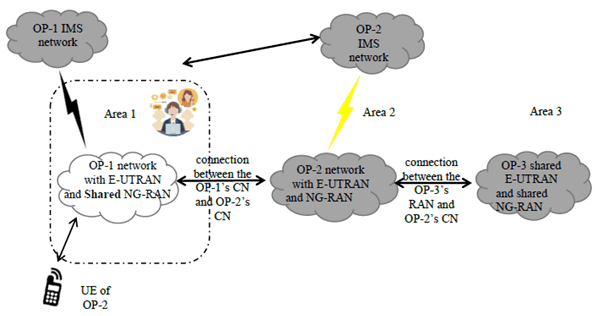Content for TR 22.851 Word version: 19.1.0
5.6 Use Case on Emergency Call
5.6.1 Description
5.6.2 Pre-conditions
5.6.3 Service Flows
5.6.4 Post-conditions
5.6.5 Existing Features partly or fully covering Use Case Functionality
5.6.6 Potential New Requirements needed to support the Use Case
...
...
5.6 Use Case on Emergency Call p. 19
5.6.1 Description p. 19
The network is allowed to route the emergency call to the emergency response centre in the area where the operator provides services, as specified in TS 22.101, in accordance with national regulations and where the subscriber is located.
In order to route emergency calls to the correct emergency response centre, operators may need to use the UE location information. Operators may use different location information based on the requirement of the national regulation. Sometimes operators have to change the network configuration to provide correct routing or services related to location information in an area.
This use case provides the possibility that the subscriber of the participating operator may initiate an emergency call in the shared network, which leads to the problem to the service provider of routing the emergency call according to the location information of the hosting operator.
5.6.2 Pre-conditions p. 19
Assumptions:
- OP-1 is a Hosting NG-RAN Operator. There is a connection between the OP-1's CN and OP-2's CN, while OP-2 as a participating operator indirectly sharing the network.
- OP-2, as the participating operator, is an emergency call service provider. The network of OP-2 is connected to the emergency response centre located in Area 1.
- OP-3 is the Hosting RAN operator of NG-RAN and E-UTRAN. And OP-3 and OP-2 have a sharing agreement with MOCN.
5.6.3 Service Flows p. 19

- UE is registered to OP-2. UE accesses the shared network of OP-1, and registered with the OP-2's IMS. The nearest emergency response centre to UE's current geographic location is in Area 1, shown as Figure 5.6.3-1.
- UE initiates an emergency call in the shared network, it is most reasonable for the core network of OP-2 to route the emergency call to PSAP within area 1.
- OP-2's network routes the emergency call to PSAP in Area 1 according to the location information transmitted by the shared network.
5.6.4 Post-conditions p. 20
The emergency call can be correctly routed to the appropriate PSAP to serve the UE according to its location information.
5.6.5 Existing Features partly or fully covering Use Case Functionality p. 20
Clause 10 of TS 22.101 defines the emergency call service. According to National regulations, the requirement of UE's location of emergency call service is different in deployment scenarios, examples are:
National regulations may require wireless networks to provide the emergency caller's location. This requirement typically overrides the caller's right to privacy with respect to their location being revealed, but remains in effect only as long as the authorities need to determine the caller's location. The interpretation of the duration of this privacy override may also be different, subject to national regulation. For example, some countries require location to be available from the wireless network only while the call is up, while others may allow PSAP's to unilaterally decide how long the location must be made available.
Therefore, the requirement for providing location availability is to allow the network to support providing a mobile caller's location to the authorities for as long as required by the national regulation in force for that network.
5.6.6 Potential New Requirements needed to support the Use Case p. 20
[PR 5.6.6-001]
Subject to national or regional regulatory and operator policies, the 5G system shall support emergency call from a UE accessing a Shared NG-RAN via Indirect Network Sharing.
[PR 5.6.6-002]
Subject to national or regional regulatory and operator policies, the 5G system shall provide to the Participating Operator the location information of an emergency caller accessing a Shared NG-RAN via Indirect Network Sharing.